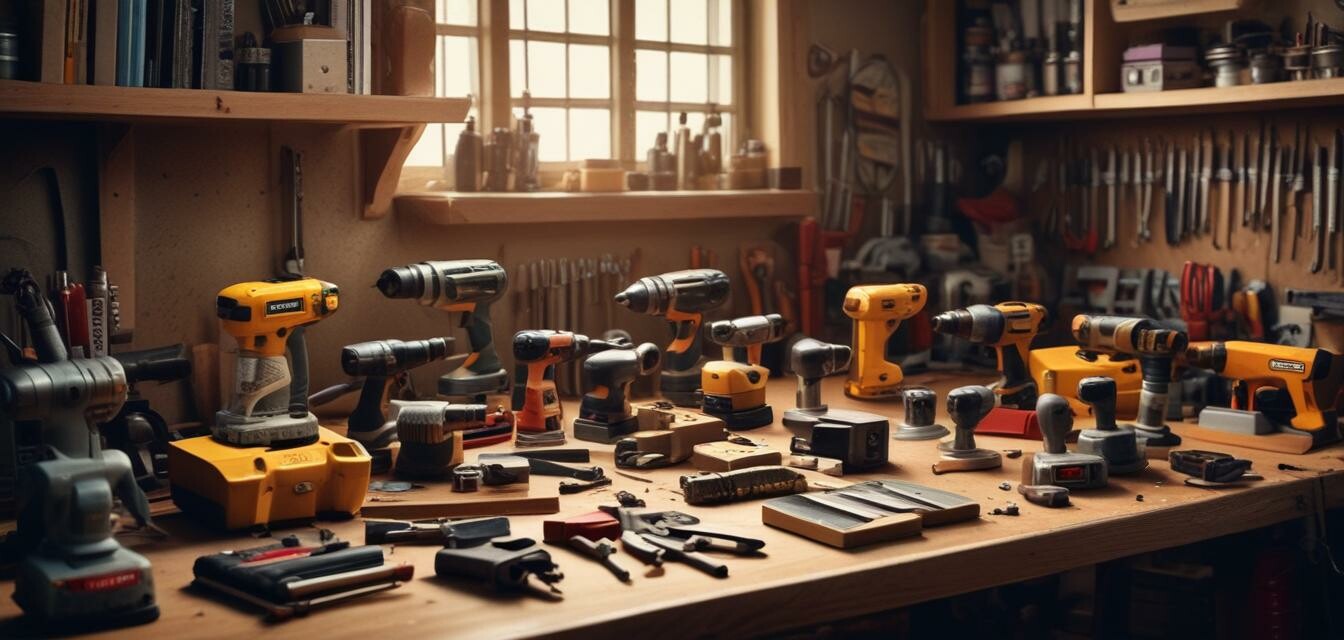
Understanding Power Ratings of Tools
Key Takeaways
- Power ratings help assess the performance of power tools.
- Higher wattage often indicates more power, but efficiency is crucial.
- Understanding volts and amps is essential for tool compatibility.
- Always consider your project requirements when choosing tools.
- Safety ratings should not be overlooked for safe operation.
Whether you're a contractor or a DIY enthusiast, understanding power ratings of tools is crucial to ensure you select the right equipment for your projects. This article will explore what power ratings mean, how they impact tool performance, and the best practices for choosing the right tools for your specific needs.
What are power ratings?
Power ratings refer to the specifications that indicate how much energy a power tool requires to operate efficiently. They are primarily measured in volts (V), amps (A), and watts (W). Understanding these metrics is vital for assessing a tool's suitability for different tasks and projects.
Understanding volts, amps, and watts
The relationship between volts, amps, and watts can be summarized with a simple formula:
Watts = Volts × Amps
Voltage (Volts)
Voltage indicates the force that pushes electric current through a circuit. In power tools, a higher voltage typically means more power to perform tasks efficiently. Here’s how common voltages are used:
| Voltage | Common Use |
|---|---|
| 12V | Light-duty cordless tools |
| 18V | Medium-duty cordless tools |
| 120V | Standard plug-in tools |
| 240V | Heavy-duty industrial tools |
Current (Amps)
Amps, or amperes, measure the flow of electric current. Generally, tools with higher amperage can perform demanding tasks more efficiently. Here’s a breakdown:
- Higher amps usually mean more horsepower.
- Tools with lower amps may struggle with more substantial jobs.
Power (Watts)
Watts represent the total amount of energy consumed or produced. When considering tools, it's essential to look for tools that provide enough wattage to handle your project requirements efficiently.
How to choose the right power tools
Choosing the right power tool involves considering several factors related to power ratings as outlined in the sections below.
Assess project requirements
Begin by evaluating the complexity and demands of your project. Here are some factors to consider:
- Type of material: Some tools perform better on specific materials.
- Task difficulty: More challenging tasks require more powerful tools.
- Frequency of use: Regular use may justify investing in high-powered tools.
Power ratio
It’s not only about having high ratings but also balancing between volts, amps, and watts. Make sure to check the following:
- For regular use, a balance of 18V and 4-5A tools would suffice.
- For heavy projects, look for tools with at least 2400 watts.
- Ensure compatibility with existing batteries if using cordless tools.
Safety ratings
Safety should always be your priority when selecting tools. Tools should have safety certifications which provide assurance that they meet performance standards.
Conclusion
Understanding power ratings is essential for selecting the right portable power tools. By familiarizing yourself with volts, amps, and watts, you can ensure that your tools are up to the task for your projects. Remember to assess your project requirements and prioritize safety ratings to ensure optimal performance and reliability.
Pros
- Help select the right tool for the job based on power needs.
- Ensure efficient operation, reducing energy waste.
- Enhance safety when used correctly with proper ratings.
Cons
- Misunderstanding ratings may lead to poor tool choice.
- High power ratings may lead to overspending on tools.
Tips for beginners
- Start with tools that offer versatility, like multi-tools.
- Don’t underestimate the importance of user manuals; read them before using tools.
- Always wear appropriate safety gear when operating your tools.
- Consider joining local DIY workshops; hands-on experience helps.
For more guidance on using various power tools, check out our buying guides and explore the latest trends in tools with our news and trends section.
